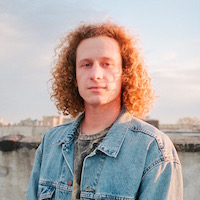More about Three Musicians

Contributor
By the time Picasso did this piece, Fontainebleau was perhaps not the same true haven of the dirtbag that it was for Monet, but neither were Pablo and his aristocratic ballerina wife really the dirtbag types.
I mean, Pablo wanted to be, but Olga and their newborn Paulo were feeling the quiet life in two rented townhouses and life as a father is really about the baby. Pablo was pretty unhappy that his first born was taking all of the attention that was rightfully his and his alone, so he quarantined himself in his studio all summer and churned out very large, very good paintings.
Even though Picasso’s time there followed the plot of a Steve Martin film about how dads are terrible at childcare, signing a painting Fontainebleau is like name-dropping 1980s New York or post-wall Berlin or idk, where are art students going right now, Mars maybe? Fontainebleau was referred to as an “artistic reserve” like a zoo but with artists. It’s string of tiny towns around a former royal hunting forest where the creatively inclined would wander around sketching by day and getting hammered at night for the fair price of five francs per day. Something like the Luncheon of the Boating Party but more broke and less coed. The area stayed ~hip~ for more than a century, seducing romantic writers, Impressionists, and Modernist painters with the same sweet nothings. Public life was still a bit of a boys club once you got off of rue St. Denis, although Robert Louis Stevenson did report that boys kept getting distracted by the American and English ladies who it seems were better focused and better painters.
Here, in what appears to be a painting of one giant musician with three heads, Picasso is seriously avoiding any kind of domestic romance. The dog knows it’s not getting a walk anytime soon, but the shadow of its face looks pretty stoked on whatever the guys are playing. Picasso generally dresses himself like a jester in paintings and this one is just about life sized, so it’s definitely some next-level, daddy-issues escapism. Picasso, sitting alone in his studio, drunk, talking to a painting of him and his friends; a stuffed animal tea party but with masked musicians and booze in a dark room.
Hide yo kids, hide yo wife, like in the main house so that you don’t have to change any diapers.
Sources
- Georgel, Chantal. “The Forest of Fontainebleau. A Life-Sized Studio. From Corot to Picasso.” Musée d’Orsay, 2007. Accessed February 12, 2018. http://www.musee-orsay.fr/en/events/exhibitions/archives/exhibitions-ar…
- “Pablo Picasso Biography.” PabloPicasso.org, 2018. Accessed February 12, 2018. https://www.pablopicasso.org/picasso-biography.jsp
- “Pablo Picasso Three Musicians.” Excerpt from MoMA Highlights. New York: The Museum of Modern Art, revised 2004 (1998). Accessed February 12, 2018. https://www.moma.org/collection/works/78630
- Richardson, John. A Life of Picasso: The Triumphant Years, 1917–1932. New York: Alfred A. Knopf, 2007. Accessed February 12, 2018. https://books.google.com/books?id=wZB5INGODCUC&pg=PA189&lpg=PA189&dq=pi…
- Stevenson, Robert Louis. The Works of Robert Louis Stevenson: Miscellanies Volume III. Edinburgh: Longmans Green & Co., 1895. (Digitized by Internet Archive with funding from National Library of Scotland, 2010). Accessed February 12, 2018. https://archive













